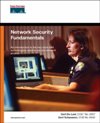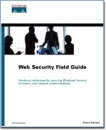作者:Gert DeLaet, Gert Schauwers
出版日期:September 18, 2004
出版社:Cisco Press
页数:480
ISBN:ISBN-10: 1587051672 ISBN-13: 978-1587051678
文件格式:CHM
Product Description
An introduction to the key tools and technologies used to secure network accessExamine common security vulnerabilities and the defenses used to protect network resourcesLearn about cryptography, including modern-day techniques like 3DES, RSA, hashing, and the use of certificatesLearn how to design, adopt, and enforce security policiesEvaluate the nuances of secure network designSecure HTTP traffic by hardening operating systems, servers, and browsersProtect routers through administrative access policies and servicesUnderstand what firewalls do and how to implement them to maximum effectInspect and monitor network activity with IDSUtilize VPNs for secure remote accessLearn about PKI technologiesExamine secure wireless design techniquesUse logging and auditing tools, such as syslog, SNMP, RMON, and SAA, to manage network trafficCompanies have long been struggling with threats from the hackingcommunity. Keeping pace with the rapid evolution of security technologyand the growing complexity of threats is a challenge even in the bestof times. The increased focus on security has sent IT managers andengineers scrambling to acquire the proper expertise to implementcomplex, multilayered solutions.
Network Security Fundamentals introduces the topic ofnetwork security in an easy-to-understand and comprehensive manner.This book is designed to provide a fundamental understanding of thevarious components of a network security architecture and todemonstrate how each component can be implemented to achieve bestresults. The book uses straightforward language to introduce topics andto show the features, mechanics, and functionality of various networksecurity devices. A series of case studies helps illuminate conceptsand shows how you can apply the concepts to solve real-world problems.
Divided into four parts, Network Security Fundamentalstakes you on a tour of all the essential technologies and moderndefenses at your disposal to help you maintain network uptime and dataintegrity. Part I covers the basics, introducing terms and concepts andlaying the foundation of a solid security structure. The discussionfocuses on weaknesses and vulnerabilities along with an overview of thetraditional defenses used to thwart attacks. Part II examines twocomponents of security-cryptography and security policies. Part IIIlooks at the various security components. Separate chapters cover websecurity, router security, firewalls, intrusion detection systems(IDS), remote access security, virtual private networks (VPN), PublicKey Infrastructure (PKI), wireless security, and logging and auditing.Each chapter in this section is a self-contained tutorial, allowing youto skip to those topics of greatest interest or primary concern. PartIV includes several reference appendixes, including the Cisco SAFEBlueprint, NSA guidelines, and SANS policies.
Whether you are looking for an introduction to network securityprinciples and practices or a security configuration reference, thisbook provides you with the invaluable insight you need to protectvaluable company resources.
About the Author
Gert De Laet, CCIE No. 2657, is a CCIE in both Routingand Switching and Security. Gert has more than 10 years of experiencein internetworking and works in Brussels, Belgium, for the worldwideCCIE team as a product manager at Cisco Systems.
Gert Schauwers, CCIE No. 6942, has CCIEcertifications in Security, Routing and Switching, and Communicationand Services. He has six years of experience in internetworking. He iscurrently working for the CCIE team at Cisco in Brussels, Belgium, as aCCIE content engineer.







 评论 (0)
评论 (0) 